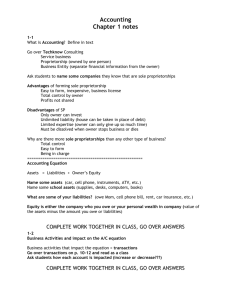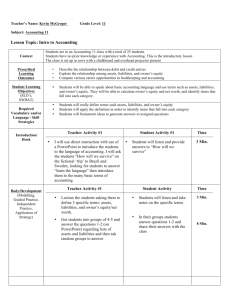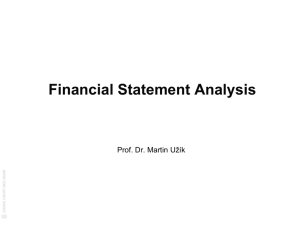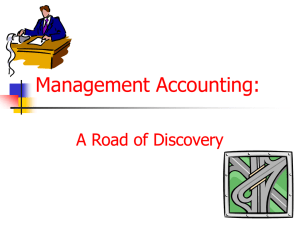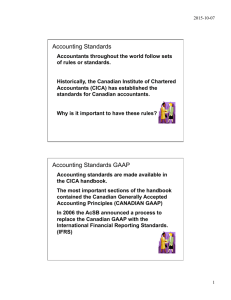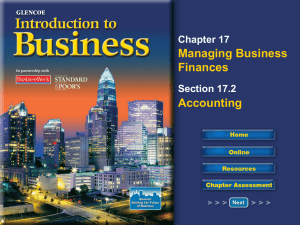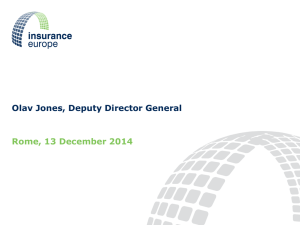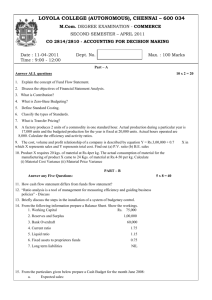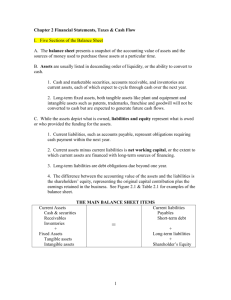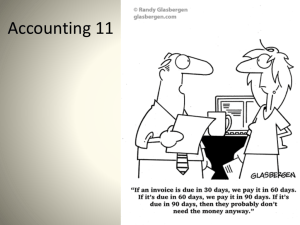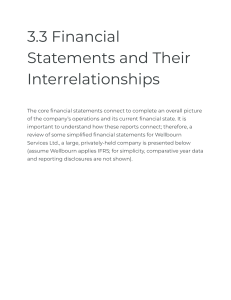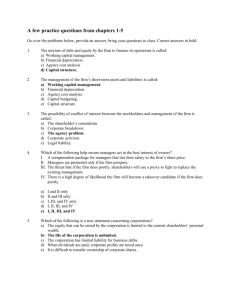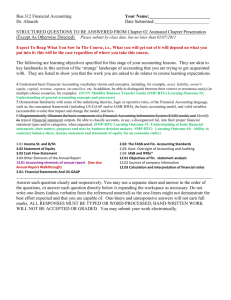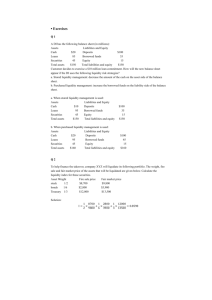BAF3M Accounting
advertisement
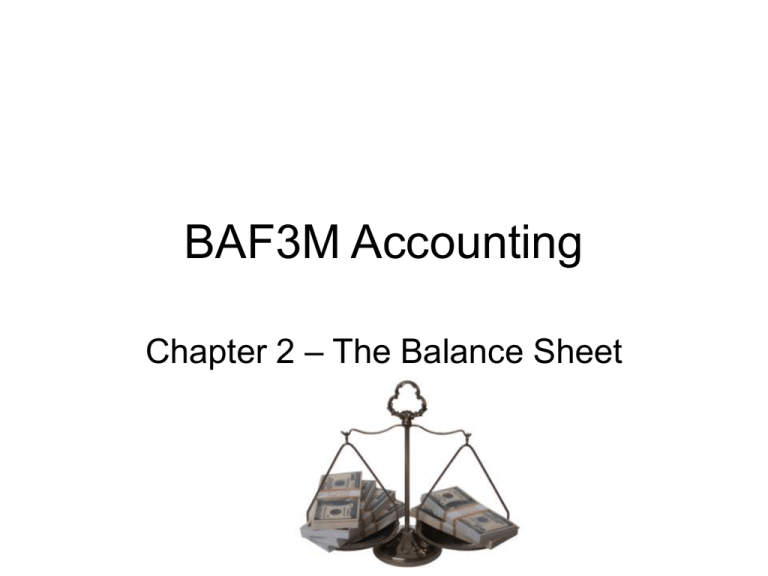
BAF3M Accounting Chapter 2 – The Balance Sheet 2.1 Financial Position • Basic concept to the whole accounting system – To determine your financial position • 1 – list dollar values of things you own • 2 – list dollar values of things you owe • 3 – calculate the difference 2.1 Financial Position Proper Terminology • 1 –things you own ASSETS • 2 –things you owe LIABILITIES • 3 –the difference OWNER’S EQUITY* • * other names for OE include “NET WORTH”, “CAPITAL”, or just “EQUITY” 2.1 Financial Position Fundamental Accounting Equation • Pg.19 – this relationship is the key to the entire accounting system • Assets = Liabilities + Owner’s Equity A = L + OE 2.1 Financial Position • P. 19 • 2.1 Questions: #1-6 • 2.1 Exercises: #1-6 2.2 The Balance Sheet • Formal document which shows financial position of a person, business or other organization • Examples p. 21 Fig 2.1 ‘personal’ AND Fig 2.2 ‘small business’ 2.2 The Balance Sheet • Set up the form of the fundamental accounting equation: A = L + OE • Assets always on LEFT • Liabilities and Owner’s Equity on RIGHT • Heading is WHO? WHAT? WHEN? 2.2 The Balance Sheet • Assets are listed in order of LIQUIDITY (closest to cash) • Liabilities listed in order they are paid off • Final totals get a double underline 2.2 The Balance Sheet • Accounts Receivable & Accounts Payable – A.k.a. : “A/R” and “A/P” – A/R is when someone buys from you, but has not paid you yet, so its an ASSET – A debtor is someone who owes you money – A/P is when you bought something, but have not paid it yet, so it’s a LIABILITY – A creditor is someone you owe money to 2.2 The Balance Sheet • Preparing the Balance Sheet – Overhead Example, follow along – 6 steps outlined on p. 23-25 2.2 The Balance Sheet • Basic Recordkeeping Practices – Let’s keep these in mind as we proceed through this course • Use of Columnar Paper • Use of Ruled Lines • Neatness – (these will all become ‘second nature’ as you progress) 2.2 The Balance Sheet • p.28 2.2 Q’s: 3, 4, 6, 9, 11, 12 • p. 28 2.2 Ex’s: 1, 2 – 2.3 Claims Against the Assets • Both creditors and owners have claims to the assets listed on the balance sheet • Why? – Because creditors have usually provided the funds to the business to purchase the assets – Upon liquidation of assets, creditors are paid first – Leftover amounts go to the owner (capital) 2.4 Accounting Standards • p. 33 – Accountants have specific standards, rules and guidelines they must follow in order to ensure that their work properly done – Used to be GAAP – Canada now switched over to IFRS and ASPE – IFRS International Financial Reporting Standards – ASPE Accounting Standards for Private Entreprises 2.4 Accounting Standards • ASPE – mostly for private companies • IFRS – mostly for public companies • Some basic accounting standards will be pointed out through the course, but a specific knowledge of all standards is not required in this course. • More on these as we need them! Chapter 2 Review • Pg. 47 • Review Q’s: 1 - 6
